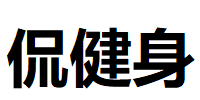An article to help you understand the difference between glute bridge and hip thrust, a must-read fo
First, here are the action diagrams of glute bridge and hip thrust, so that you can clearly distinguish these two actions at a glance. The details are as follows:
Glute bridge exercise diagram:
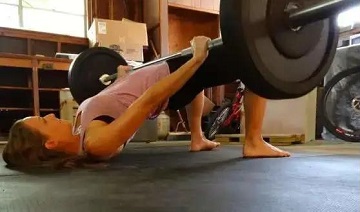
Hip thrust diagram:
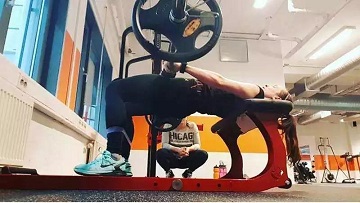
As can be seen from the above two pictures, the glute bridge is a hip thrusting movement with the body close to the ground, and the hip thrust is a hip thrusting movement with the body elevated. Both of these movements can exercise the gluteal muscles and lower back muscles.
Secondly, glute bridge requires low back strength of the practitioner and the training intensity is also low. The hip thrust requires the practitioner to have stronger core muscle strength, and the training intensity is also higher, and heavy weights can be added for practice. The range of hip flexion and extension of the hip bridge is also smaller than that of the hip thrust. If you want to better stimulate the buttock muscles, the hip thrust is definitely a good movement to abuse the buttocks. However, the prerequisite is that you already have a certain training foundation and can master the essentials of the movements.
Next, let’s explain in detail how to do glute bridge and hip thrust?
1. How to do glute bridge?
1. Bend your knees and lie on your back on the ground. The distance between your feet is slightly wider than shoulder width and slightly apart to both sides. Place your arms on the ground apart to the sides.
2. Use the shoulders and upper back as one fulcrum and the feet as the other fulcrum to push the hips upward. The middle and lower back and thighs will also be lifted upwards until the entire torso from shoulders to knees is basically the same. In a straight line and roughly perpendicular to the calf. During the entire process, your feet, shoulders, upper back, and arms remain stationary, and your calves cannot actively move.
3. Use force on your hips to restore slowly and in a controlled manner.

Training points:
1. Use your buttocks to exert force, and do not press down on your arms and upper back to use force.
2. When lifting the trunk, use the buttocks as the focus and center of upward movement, rather than the middle and lower back.
3. The shoulders and upper back serve as the same fulcrum to provide stable support. Do not pursue lifting the upper back, as this can easily damage the shoulders and cervical vertebrae.
2. How to do hip thrust?
1. Place the training chair horizontally and sit in front of the chair. Lean the lower edge of your shoulder blades against the chair and place the barbell to the upper end of your thighs (where your pants will wrinkle when you sit down, it is recommended to place a soft cushion or yoga mat under the barbell to avoid pressing the bones.) Grasp the barbell with both hands, with your toes pointing towards Keep your front and lower legs as perpendicular to the floor as possible, and do not move up or down during the exercise.
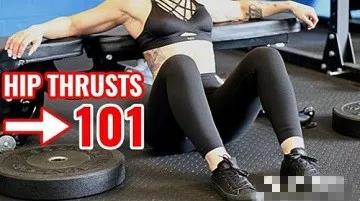
2. Slightly retract the chin, tighten the trunk and core muscles, and use the hip joint as the driving force to push the butt upwards until the body becomes a line and stop, clamp the buttocks for 2 seconds, and then slowly lower it.
3. When performing the next repeated movement, the buttocks can touch the ground first, or you can start the next movement in the opposite direction while in mid-air. Remember to use your hips to push your torso up, not your lower back.
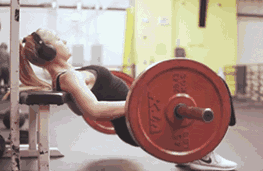
What should I do if I don’t feel my buttocks while practicing glute bridge or hip thrust?
If you don’t feel your buttocks when doing glute bridges or hip thrusts, your buttocks won’t change at all in a few months. Then it is recommended that at the end of the movement, when the shoulders to the knees are basically in a straight line, and the hips are fully extended upward, clamp the PP hard without leaving any gap, and maintain this movement for 3-5 seconds, so that you can experience The feeling of contraction in the buttock muscles.
What causes low back pain when practicing glute bridge?
In the actual glute bridge exercises, some friends will complain of back pain after practicing. The reason is caused by irregular movements during the exercises. If the lumbar vertebrae are excessively pushed upward when doing the glute bridge movement, the lumbar vertebrae will be hyperextended and the spine will be in an abnormal physiological curvature, and the intervertebral discs will be squeezed by uneven pressure, which will lead to lower back pain in the long run. Please look at the picture below:
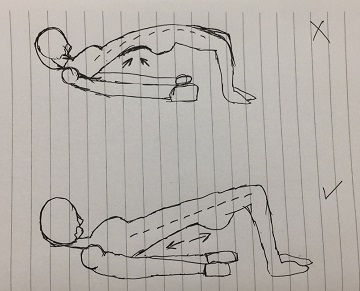
The correct movement should be to lift the hips to the entire torso, basically in a straight line from the shoulders to the knees, and roughly perpendicular to the calves.

微信扫一扫打赏

支付宝扫一扫打赏
健身最难的就是坚持,加博主微信:jsnrjx,邀请你进健身打卡群。与200多位健友一起健身打卡,从此告别三天打鱼,两天晒网。

